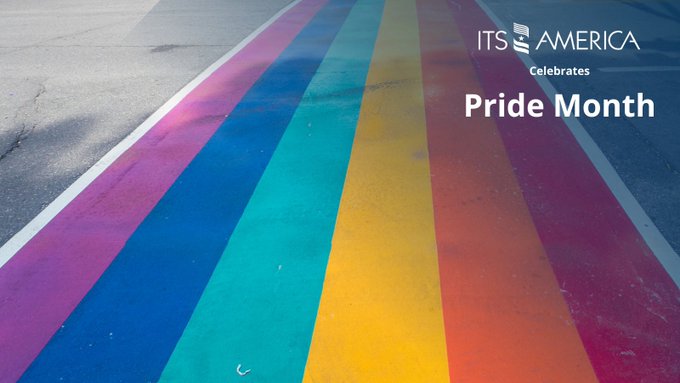June 28, 2023
ITS America Celebrates Pride Month

ITS America and its members are dedicated to advancing equity and inclusion, recognizing that technology and innovation are critical to advancing opportunity for all members of our society to see a safer, greener, smarter future. Celebrating diversity and fostering inclusivity makes our world better for all. Our vision and future mobility principles show our commitment not only in words but in action to championing a transportation system and workforce that serves all equally. We continue to create and promote tools and resources that help our members plan, design, and operate a more inclusive system. To advance those efforts, we want to share the work of two of our members – Minnesota DOT (MnDOT) and the University of Minnesota – which are founding members of the Gender Equity in Transportation Collaborative, or GET Collaborative, whose mission is to champion research that fosters more inclusive, non-binary transportation access.
Through MnDOT’s Advancing Transportation Equity Initiative, MNDOT and the University of Minnesota, recently released a research project on the role of gender and identity in travel behavior and experience. This study has spotlighted some gender-specific trends of note and ways to advocate for equity in transportation.
1) We must recognize that gender is not binary. A person’s gender identity, or sense of oneself, is not always aligned with their sex assigned at birth and may extend beyond the male-female binary. Gender identity affects travelers’ experiences and should be considered when addressing the future of our transportation system. When transportation practitioners view gender as merely male or female, they are overlooking the travel needs and experiences of non-binary people, and therefore, not addressing the transportation disparities associated with certain gender identities. It is crucial to understand the needs and experiences of all genders to advance gender equity in transportation.
2) It is important to understand the intersectional nature of gender. Gender identity is one of the many social identities that a person holds, along with race, class, parenthood, and other traits. Viewing gender identity independently from other social traits ignores the power dynamics that stem from the interaction of these social traits. The power implications of intersectionality play out in individual lives, institutional arrangements, and society.
3) Women and non-binary people face different issues than men when traveling, be it how they travel (often linking several trips together to complete multiple activities), transportation options (women share more household tasks than men, which limits travel time availability and travel mode options), or their experiences while traveling (women and non-binary people feel unsafe using transit).
4) Assessing perceived or potential safety issues across genders is important. While men generally found issues with low frequency, speed, and lack of destination access as barriers to public transit use, women and non-binary people identified questions about safety as a top barrier to their everyday travel. Non-binary people had less positive and more negative experiences resulting in the lowest subjective well-being outcomes.
Knowing that these issues exist, how do we address them? How do we make the transportation system more equitable for all genders?
1) We must build consideration of gender into how we build and plan the transportation system. Transportation practitioners should consider gender and the ways it interacts with social traits like age, race, family role, and other social or demographic characteristics.
2) Adopting and consistently using gender-inclusive language in project design and communication. Including gender from the planning stages.
3) Engaging with the community to better understand travelers’ needs, experiences, and the intersectional nature of gender.
4) The agency can partner with community organizations to collect ongoing feedback and avoid marginalizing disproportionately impacted populations.
Please contact membership@itsa.org if you have any questions.

